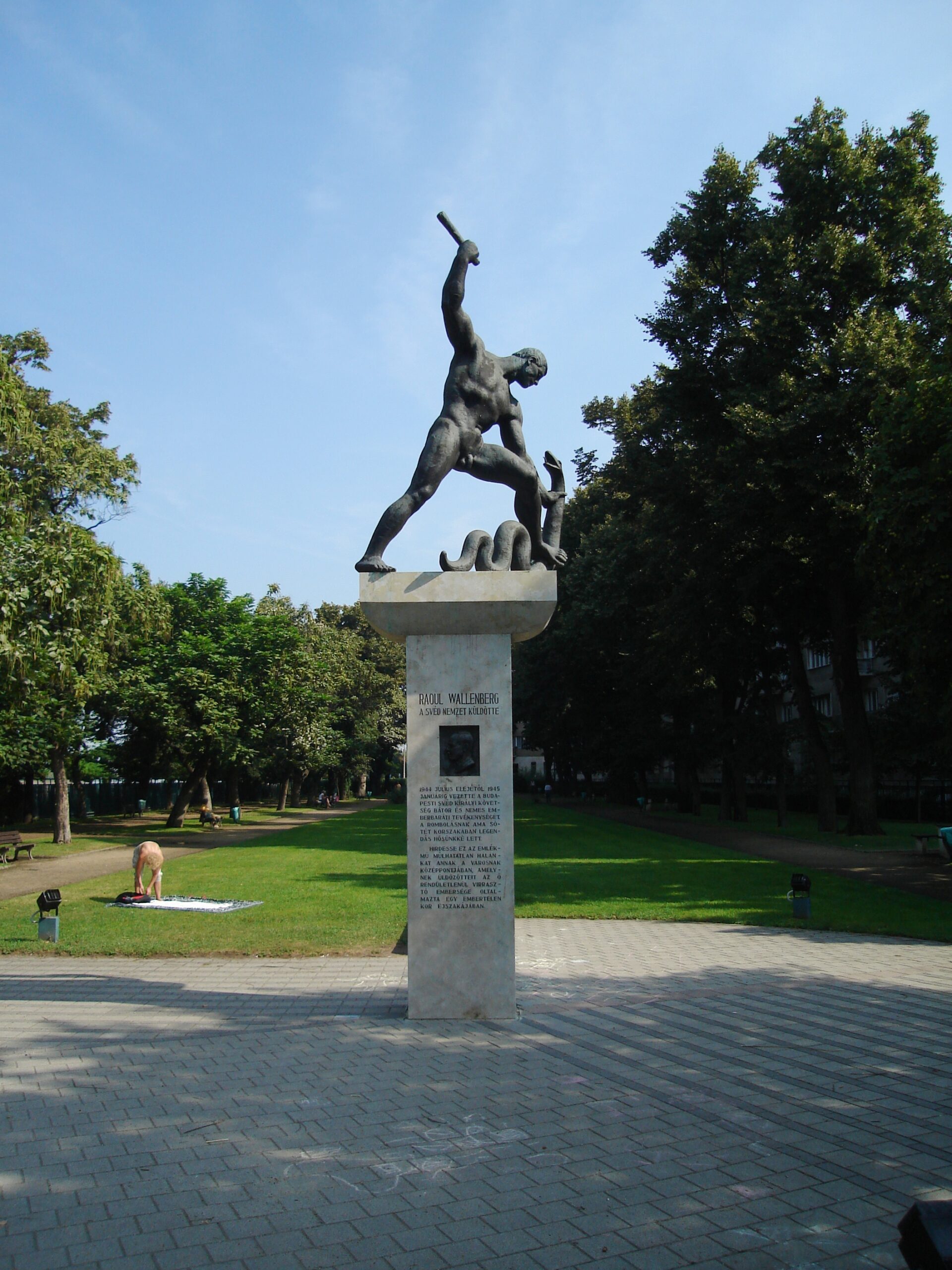Rescuing Hungarian Jews – Raoul Wallenberg Statue
Fact of the Hungarian figure „Brick Factory in Obuda – The Holocaust in Hungary”
Part of the „The Holocaust” topic
Raoul Wallenberg, a Swedish diplomat working in Budapest, is remembered as one of the most significant figures in the effort to rescue Hungarian Jews during the Holocaust. As part of a larger rescue operation led by Sweden, Wallenberg was tasked with using his diplomatic status to save Jews from deportation. The issuing of the Schutzpass, a protective passport that granted its holder Swedish protection, became a central tool in these efforts. With this document, Wallenberg was able to shield thousands of Jews from deportation to Auschwitz-Birkenau, offering them a lifeline at a time when most of Hungary’s Jewish population had already been transported to extermination camps.
Wallenberg’s rescue efforts were part of a broader network of diplomatic interventions. Diplomats from other neutral countries also took significant risks to protect Jewish lives. Swiss diplomat Carl Lutz, for example, issued tens of thousands of emigration certificates, while Giorgio Perlasca, who posed as a Spanish diplomat, played a crucial role in protecting Jews in Budapest. Together, these diplomats were responsible for the survival of over 100,000 Jews in the city, a remarkable feat amidst the brutal reign of the Arrow Cross Party and the ongoing Nazi occupation.
Wallenberg’s actions were not limited to bureaucratic measures. He personally intervened in dangerous situations, including at train stations where Jews were being loaded onto transports bound for death camps. His courageous interventions—pulling people off trains and confronting officials—saved countless lives. This personal involvement, combined with his diplomatic ingenuity, turned Wallenberg into a symbol of hope during one of the darkest periods of the Holocaust in Hungary.
The significance of Wallenberg’s mission is not just a Hungarian story but part of a larger Central European narrative of resistance and rescue during the Holocaust. Figures like Oskar Schindler in Poland, and Chiune Sugihara in Lithuania, similarly took great personal risks to protect Jewish lives, operating within the broader context of Nazi-occupied Europe. These actions, while courageous and lifesaving, stood in stark contrast to the widespread collaboration with Nazi forces by local governments and fascist movements throughout the region.





